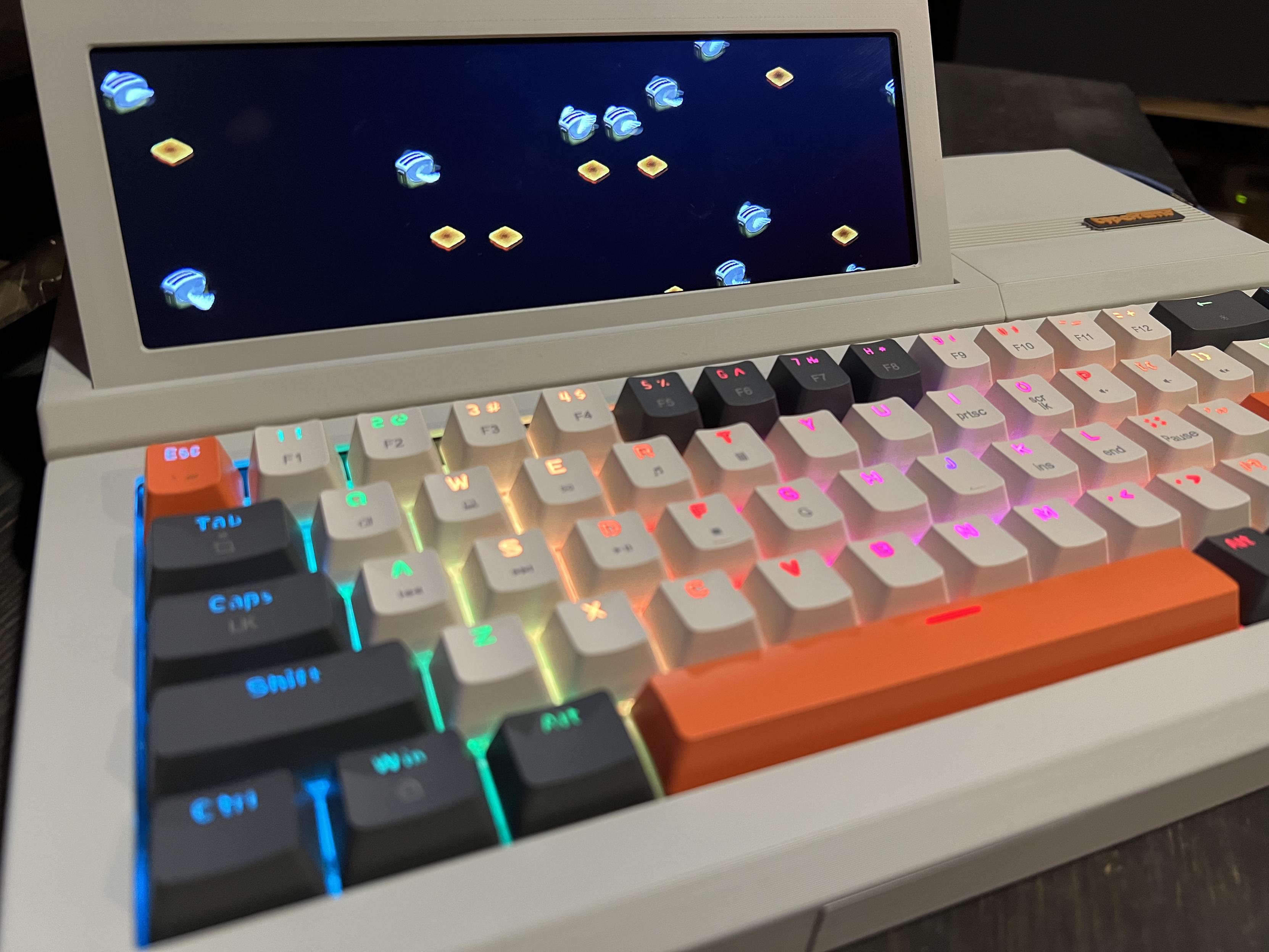For the first time we now also offer ARM64 builds for devices that boot with UEFI. This means you'll be able to run OS 8.1 on M-series Apple Silicon and devices where you can load UEFI-supporting firmware like Raspberry Pi. This version of Linux also supports certain Qualcomm and Rockchip processors, for example
hey, people knowledgeable in #electronics , I have a dumb question:
I have a 16x16 panel of rgb leds (WS2812B ? not 100% sure, but 5v IN)
I want to pilot it with a RP Pico 2W.
If I have a beefy enough USB charger / battery, is it safe for everyone to use the usb plug of the RP Pico, and get the 5v Vin power for the panel from the Vbus pin of the RP pico? Will it provide safely the multiple amps the panel needs? (how much exactly? can't find) for full white light?
I just published the code of the first prototype of Diapasonix, a bass-like synth and MIDI controller I'm developing.
It uses the fabuolous AMY synth engine and runs on a Raspberry Pi Pico 2. Loads of presets and effects!
Full video: https://youtu.be/DMDRZ1dwdG4
Yesterday was the third anniversary of Raspberry Pi announcing that they'd hired an ex-cop (specifically a Technical Surveillance Officer) as their "Maker-in-residence", and then pissing off a huge segment of their target market by acting completely oblivious as to why that might be a problem.
I missed my calendar reminder about it, so instead you can celebrate the third anniversary of Buzzfeed writing an article about it:
Speaking of the #RaspberryPi CM5, there's a new carrier board coming out - an open-hardware design which adapts it into a mini-ITX form factor complete with x16 (mechanical, it's still one-lane) PCI Express slot.
À chaque fois que je veux sortir, je trouve ça frustrant de sortir mon téléphone pour regarder quand passe le prochain métro, alors j'ai fait un programme qui me l'affiche sur un écran e-ink dans mon salon
Et c'est dispo ici : https://codeberg.org/salut-c-leo/RATPi
Yep, it runs MacOS 7.5 really wide 🙃
#typeframe #RetroComputing #cyberdeck #writerdeck #FlyingToasters #VintageApple #VintageMac


I added an internal speaker (from an old iPad) and headphone jack to my Typeframe. Since I used a Pi 5 with no on-board analog audio, I used a USB audio dongle.
I was delighted to learn of the simplicity of switching 3.5mm headphone jacks. They have 5 poles instead of 3. The audio source and internal speaker are wired to the headphone jack pins. They're normally closed and the internal speaker works. Plug in headphones, it switches. So simple!


À chaque fois que je veux sortir, je trouve ça frustrant de sortir mon téléphone pour regarder quand passe le prochain métro, alors j'ai fait un programme qui me l'affiche sur un écran e-ink dans mon salon
Et c'est dispo ici : https://codeberg.org/salut-c-leo/RATPi
heise+ | Open-Source-Inventarsoftware: Mit HomeBox Ordnung ins heimische Chaos bringen
Über die Jahre sammelt sich insbesondere bei Tech-Enthusiasten einiges an Material an. Die Open-Source-Inventarsoftware Homebox schafft Ordnung und Übersicht.
Fix HDMI-CEC weirdness with a Raspberry Pi and a $7 cable
https://johnlian.net/posts/hdmi-cec/
#HackerNews #FixHDMICEC #RaspberryPi #TechHacks #DIYElectronics #HomeTheater
heise+ | Open-Source-Inventarsoftware: Mit HomeBox Ordnung ins heimische Chaos bringen
Über die Jahre sammelt sich insbesondere bei Tech-Enthusiasten einiges an Material an. Die Open-Source-Inventarsoftware Homebox schafft Ordnung und Übersicht.
hey, people knowledgeable in #electronics , I have a dumb question:
I have a 16x16 panel of rgb leds (WS2812B ? not 100% sure, but 5v IN)
I want to pilot it with a RP Pico 2W.
If I have a beefy enough USB charger / battery, is it safe for everyone to use the usb plug of the RP Pico, and get the 5v Vin power for the panel from the Vbus pin of the RP pico? Will it provide safely the multiple amps the panel needs? (how much exactly? can't find) for full white light?
Blick ins Heft c’t 26/2025: Der optimale PC 2026
Nur noch zwei Wochen bis Weihnachten und immer noch kein Geschenk? Wir haben da ein paar Tipps. Und zwei PC-Bauvorschläge für die Zeit zwischen den Jahren.
#Datenschutz #Entertainment #IT #KünstlicheIntelligenz #Mobilfunk #Multifunktionsgeräte #PCBauvorschlag #RaspberryPi #Wirtschaft #Wissenschaft #news
CM0 – a new Raspberry Pi you can't buy
https://www.jeffgeerling.com/blog/2025/cm0-new-raspberry-pi-you-cant-buy
#HackerNews #CM0 #Raspberry #Pi #new #tech #innovation #HackerNews #RaspberryPi
Blick ins Heft c’t 26/2025: Der optimale PC 2026
Nur noch zwei Wochen bis Weihnachten und immer noch kein Geschenk? Wir haben da ein paar Tipps. Und zwei PC-Bauvorschläge für die Zeit zwischen den Jahren.
#Datenschutz #Entertainment #IT #KünstlicheIntelligenz #Mobilfunk #Multifunktionsgeräte #PCBauvorschlag #RaspberryPi #Wirtschaft #Wissenschaft #news

